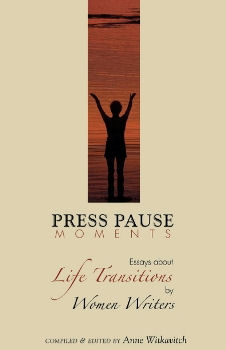
Adele Annesi is an award-winning editor and writer. She was a development editor for Scholastic, and is now a book editor specializing in business, culture and memoir. Her columns, reviews and stories appear in blogs, newspapers, magazines and literary journals, including 34th Parallel, The Fairfield Review, Hotmetalpress, Marco Polo Quarterly, Miranda Literary Magazine, The Pittsburgh Quarterly, Southern Literary Review and Tertulia. Her "After the Sunflowers" essay is part of Press Pause Moments: Essays About Life Transitions by Women Writers . Adele conducts workshops for libraries and other venues. She is currently working on a novel and a series of short stories. Visit her award-winning editing blog for writers, Word for Words , and her online workshop at Adele M. Annesi . |
The Deep Dive: Editing for Story Depth |
|
Just as relationships don’t develop depth until after year one, so, too, stories don’t really develop until draft two. I’m increasingly convinced of this. Blame it on my development editor background. Or that article about literary fiction author Charles Baxter in The Writer’s Chronicle. Whatever. The best time to edit for story depth is the second draft. By then you should be familiar with your characters and story well enough to know what to cut, leave, revise, rewrite, reconstruct, refine. Here’s how to edit for theme, imagery, wordplay, and motif during this crucial phase. First, some quick definitions. The theme is the story’s main point; for example, “secrets can be deadly.” Imagery is a collection of images that creates a scene. Wordplay is the use of words to obscure or reveal aspects of plot. Motif is a recurring element, like a locked door, that relates to the theme. These elements are key because they support and enhance the story. We’ll start with theme because it’s the plumb line you’ll use to decide how to edit for imagery, wordplay, and motif. The best way to edit for theme is to know what your theme is—in this example it’s “secrets can be deadly”—and to avoid ever after mentioning it. These mentions are called thematic statements. Why are they taboo? Think of it this way: Theme, to change metaphors, is like a skeleton. Everything else is flesh on those bones, and nobody wants bones on the outside. Here’s a sample thematic statement. “Secrets, Lynn knew, could be deadly.” You can tell it’s a thematic statement because it offers a moral, or maxim. A better way to depict the same reality is: “Lynn couldn’t tell a soul, not about this.” Editing for imagery takes surgical skill. It requires reading each word as if someone else wrote it. That’s why it’s best to wait until draft two to edit images for precisely the right effect. A good way to begin is to take a sentence, word by word. Recalling how our thematic statement was recast, here’s a scene in a two-sentence microcosm: “Lynn closed the door of the guestroom. It was to have been a nursery, but it would never be that now.” Here’s the same mini-scene, edited. “She locked the door to the spare room. Now it would never be a nursery.” Here’s what changed and why. First, for intimacy, we’re using a close-up of Lynn with the word She. Next we use a stronger, more definitive verb locked. Then we change the type of room—more on that under wordplay. Finally, we tighten the second sentence to indicate Lynn has made sure the room will never become a nursery. This is where words come into play. In our example, the play is on spare room, which replaced guestroom. The first option could work, since a child could be considered a guest, even an unwelcome one. But since a person is more likely to use a guestroom, spare room better suits the mood, which is somber. Further, the word spare connotes something extra, over, and above what’s on hand. For our purposes, that’s what Lynn thinks, that a child would be unnecessary, over and above what’s already in her life. |
Now we come to motif. It may seem hard to find a prospective recurring element in a two-sentence scene, but not necessarily. Here are the words from these two sentences that could give rise to motifs throughout the story: lock, door, spare, empty room and nursery. For variations on these motifs, look beyond the literal. Locks and doors can be anything sealed off—from a crypt to a safe deposit box. Spares and empties can be anything from tires to soda cans. Nurseries can be anything from a place for plants to anywhere something is nurtured. Your seemingly endless choices will depend on what best suits the story. As with the relationship analogy, the key to story depth is time with the material and time away from it. You need time in that first draft to know your characters and subject matter. Then you need time away for the emotional distance to see what needs to be changed and how to change it. Tip: Reread your story or chapter and highlight thematic phrases in pink, imagery in yellow, wordplay in pale blue, and motif words in orange. Then refine the imagery, wordplay, and motifs to support the theme. Afterward, consider how to delete the thematic statement so that what remains is a more visual, jump-off-the-page piece. To pose an editing query, contact Adele Annesi. To see my online writing workshop. Press Pause Moments: Essays About Life Transitions by Women Writers Press Pause Moments: Essays About Life Transitions by Women Writers .  |








